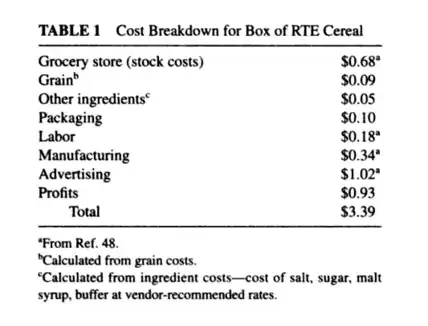In today's edition of CNN Student News (transcript), devoted to the topic "breakfast cereal", the following claim was made:
Let`s start with the cereal itself. At its core, cereal is actually the grain, like corn, oats or wheat. These energy dense grains are some of the most abundant crops we grow and the cheapest. In fact, one economist says the cardboard box costs more than the corn that goes into your cornflakes.
Is there a way of making the statement precise (what does "cost" include for both the box and the cereal?) such that it can be backed up with available figures?
